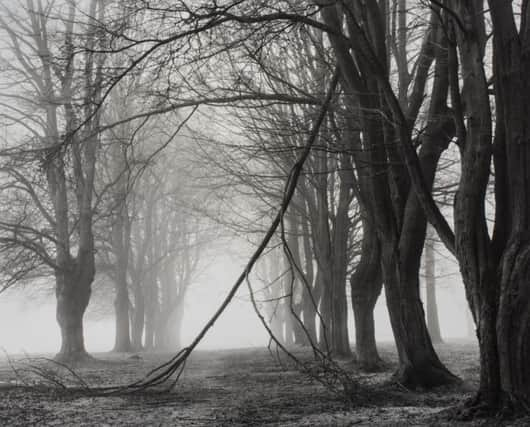Canon fodder: First World War's most infamous battle


Peter Cattrell’s Great Uncle Willie was one of them. He was 34. William Wyatt Bagshawe, a Sheffield-born landscape artist, enlisted in November 1914 in the Sheffield City Battalion, a “Pals” battalion set up to attract well-educated volunteers from the area’s professional classes.
A photograph of him is included in Cattrell’s exhibition, Echoes of the Great War, which marks the Somme centenary and opens at Sheffield’s Weston Park Museum on April 30. It shows him sitting thoughtfully with fellow-enlisters in a field at a training camp before they sailed to the Front Line.
Advertisement
Hide AdAdvertisement
Hide AdThey were an impressively academic group: a university lecturer and poet, a grammar school classics master, a student (all of them smoking pipes) and Bagshawe (smoking a cigarette). Only the student survived that first day of the Somme, going on to become a schoolteacher.
Most of the battalion died that day. As a 1920 history of the Sheffield Pals said, it was “two years in the making and one day in the destroying... Some of the best blood in the regiment was shed like water”.
Peter Cattrell, whose landscape photographs have been exhibited throughout the world, has known the group picture since he was a boy in the late 1960s. His grandmother showed it to him, along with letters, drawings and other pictures that Bagshawe, who studied at the Slade School of Art in London, had left.
London-based Cattrell says he was fascinated by the archive and took it over after his grandmother died. The fascination has developed into a major project, retracing the soldier’s footsteps.
Advertisement
Hide AdAdvertisement
Hide AdHe first visited the First World War sites in 1989 and discovered his great uncle’s name carved on the Thiepval Memorial, the great arch designed by Edwin Lutyens. It lists the names of “The Missing”, the more than 70,000 men who died on the Somme and have no known grave.
Since then, he has returned a dozen times to the battlefield. “You think every step has a story and it’s so powerful,” he says. “I’ve wandered round trying to find the exact place where my great uncle died. I may have walked over it a dozen times but I’m not sure exactly where it was.”
Cattrell’s Sheffield exhibition will feature 50 lyrical, haunting and often disquieting landscapes, taken in different seasons over several years at places often showing traces of the battlefields. Alongside them will be a series of extreme close-ups of scraps of shrapnel and barbed wire he has found on the battlefields – brought to the surface by ploughing and harvesting.
There are recent colour photographs of areas in and around Sheffield associated with the battalion’s training camp (including Stanage Edge, where they did route marches), plus cartoons and poignant documents relating to Bagshawe.
Advertisement
Hide AdAdvertisement
Hide AdThey include his sketch books, a striking etching of Whitby Abbey and letters. One, which he wrote to a friend in December 1915, suggests his wartime experiences, as one of three enlisted brothers (including Cattrell’s grandfather), had started agreeably. It reflects the buoyant mood shared by many volunteer enlisters, who joined up after Kitchener’s famous challenge.
“I have been in since very nearly the beginning (about 15 months ago),” Bagshawe wrote from a training camp on Salisbury Plain, “and have found it an extremely pleasant and healthy life – particularly the trench digging, which I could work weeks on end without tiring.”
Seven months later, when Bagshawe was reported as missing, his mother put an advertisement in the Sheffield Telegraph appealing for information about him. One reply vividly described the first morning of the battle. Bagshawe and fellow soldiers were among the first wave sent out of the trenches at about 7.15am. After the British had been shelling the German lines for five days, the Pals were told to walk across No Man’s Land and take the German positions.
“They were meant to go out through gaps in the barbed wire, but there were no gaps, so the Germans just picked them off one by one with machine gun fire,” says Cattrell. Bagshawe was shot by a sniper and his body was probably hit by shellfire and lost.
Advertisement
Hide AdAdvertisement
Hide AdCattrell adds: “I’ve always wanted to show the exhibition in Sheffield because that’s where William Wyatt Bagshawe came from.”
Great Uncle Willie has finally come back home.
• Echoes of the Great War is at Weston Park Museum, Sheffield (0114 278 2600), from April 30 to September 4. Peter Cattrell will give a lunchtime talk at the museum at 1pm on July 1 (the Somme centenary day).